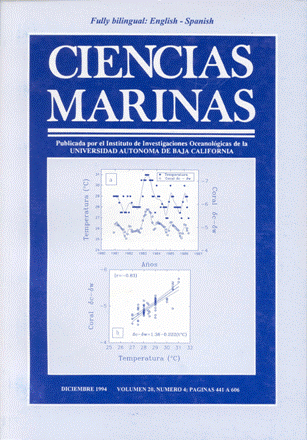Biostratigraphy and paleoceanographic significance of the radiolarians from the protomouth of the Gulf of California
Main Article Content
Abstract
The presence of radiolarians in the diatomitic strata of subunit C of the Trinidad Formation (McCloy, 1984) in Baja California Sur, Mexico, is analyzed with a graphic-multivariate model in order to define a biostratigraphic frame and infer paleoceanographic events. Stichocorys peregrina and Didymocyrtis penultimus are the only index species present in the diatomites. Nevertheless, the total faunistic composition indicates that their deposition was principally promoted by upwelling processes which occurred approximately 8 to 5 million years ago, i.e., during the latest Miocene. As time elapsed in this stage, the California Current intensified until it was very evident in the protomouth of the Gulf of California. The age of the Trinidad Formation diatomites indicates that the Pacific Ocean invaded the gulf-mouth region before the tectonic processes (sea-floor accretion and spreading) were established, processes that have opened and outlined the present morphology of the Gulf of California; consequently, the basin which harbored said invasion can be called protomouth.
Downloads
Article Details
This is an open access article distributed under a Creative Commons Attribution 4.0 License, which allows you to share and adapt the work, as long as you give appropriate credit to the original author(s) and the source, provide a link to the Creative Commons license, and indicate if changes were made. Figures, tables and other elements in the article are included in the article’s CC BY 4.0 license, unless otherwise indicated. The journal title is protected by copyrights and not subject to this license. Full license deed can be viewed here.

